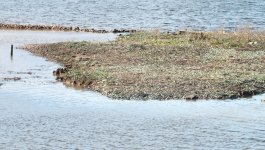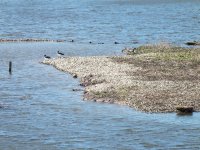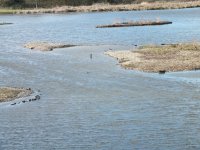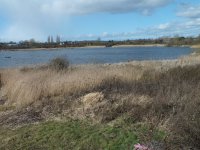Geoff - sadly cutting
phragmites only serves to invigorate the growth, which is not really what we want. What is needed is a realistic long-term approach to eradicating
phragmites across much of the area at the Flashes, especially around the second flash shore-line and to prevent it spreading into and across the field in front of the sewage works. The cattle experiment, whilst having had a very beneficial effect on the grassland areas (no mowing required yesterday|

|) had no effect on the phraggy. EN (or NE?) are reluctant to allow chemical treatment, which leaves excavation as, in my opinion the only viable quickish solution. We could of course leave the reed-bed to its own devices and hope it dries out through lack of management. However this would lead to colonisation by scrub and, eventually, trees - also not desirable. There is a suggestion from EN that lowering the water-levels would help, but I'm not overly convinced unless they have case studies that support this.










